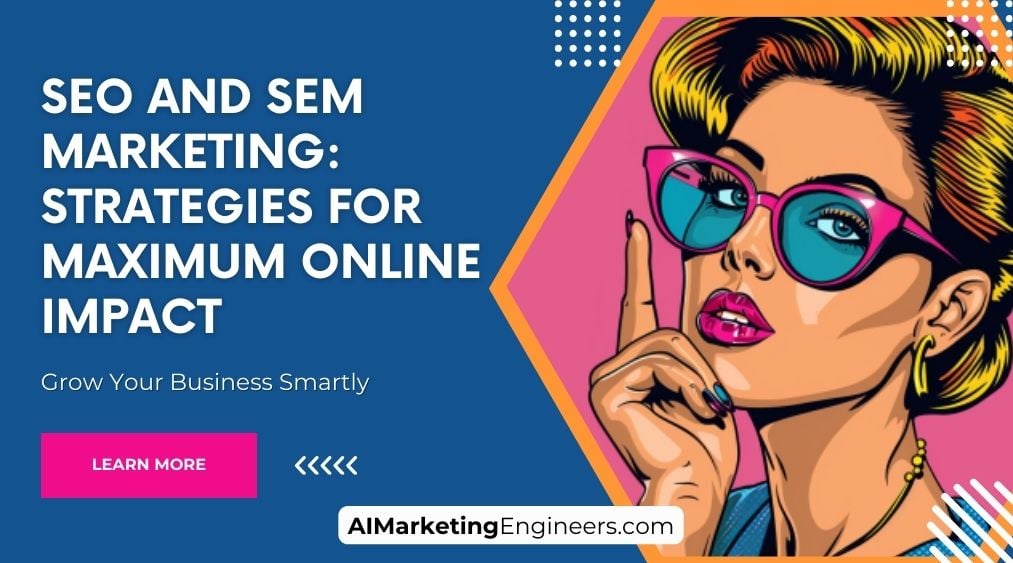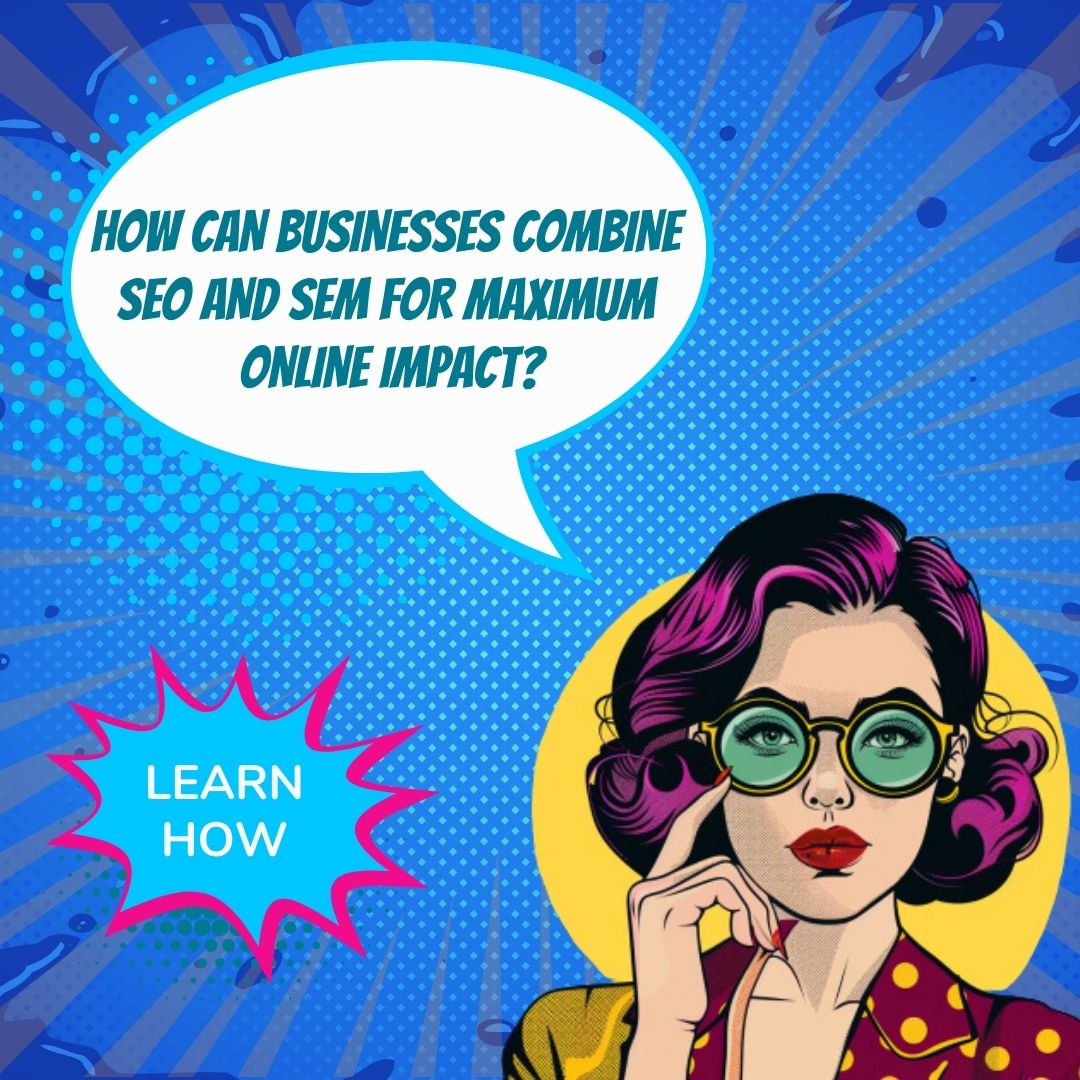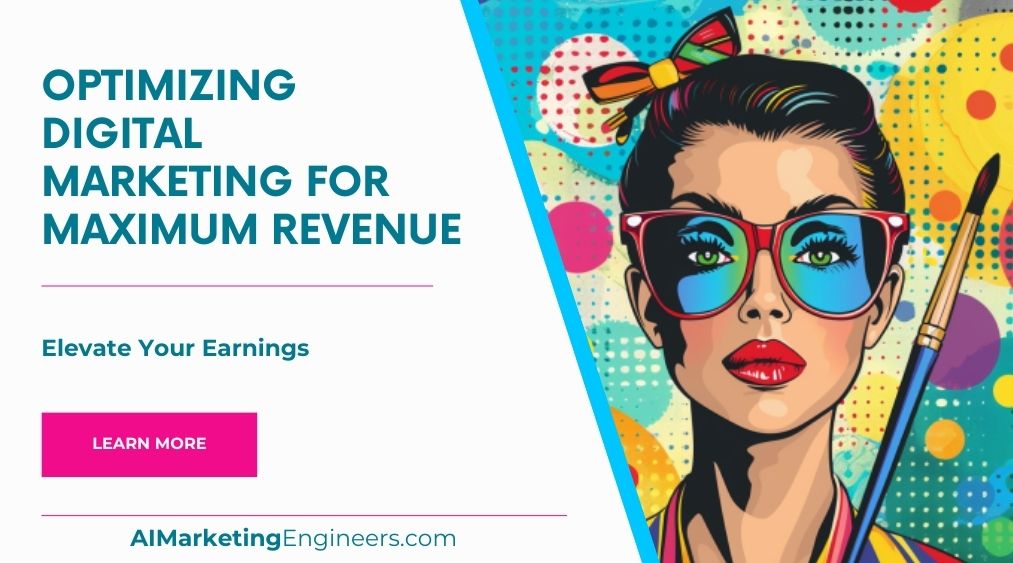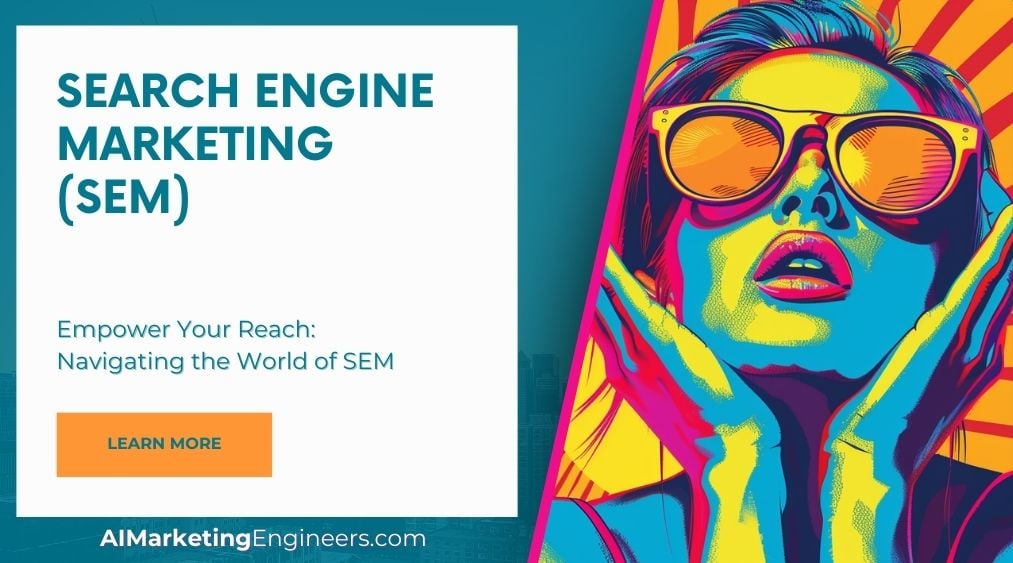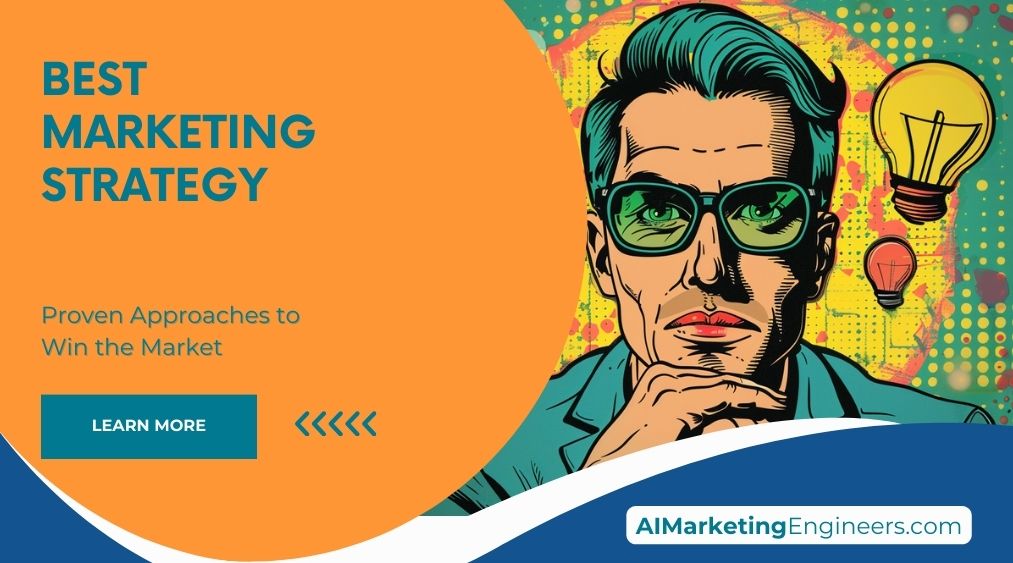Key Takeaways
✅ Understanding SEO and SEM: Dive into the essence of SEO and SEM, two powerhouses of digital marketing. SEO boosts your organic reach by refining your website, while SEM encompasses paid ads to attract quick traffic and visibility.
✅ Keyword Research and Content Creation: Begin your roadmap to success with solid keyword research. Craft content that's not only rich in those keywords but also offers loads of value, keeping your audience coming back for more.
✅ Analytics and Continuous Improvement: Numbers don't lie, so track your progress with analytics. Keep an eye on your KPIs and tweak your strategies accordingly to ensure your online presence only gets stronger.
Introduction
Ever wondered why some brands seem to have the Midas touch online? Well, it's no magic — it's a blend of SEO and SEM mastery. Whether you're a start-up on the verge of something big or an established brand looking to solidify your presence, understanding the nuts and bolts of Search Engine Optimization and Search Engine Marketing could make all the difference. The internet's a bustling city, and SEO and SEM are your billboards and megaphones, but you've got to use them right to be heard.
In the pages ahead, we're about to peel back the curtain on strategies that can catapult your brand from obscurity to omnipresence. You ready to maximize your revenue, ROAS, and ROI with insights that cut through the noise? Stick around — we're serving up a platter of tactics that aren't just talk. Transformative steps are waiting, promising to turn hopeful clicks into concrete conversions. Get set for a journey through the land of optimized content and strategic ads!
Top Statistics
| Statistic | Insight |
|---|---|
| Global SEO & SEM Market Size (2020): $83 billion, expected to reach $97.45 billion in 2021 | If you thought SEO and SEM were already big, think again! With the market growing like this, can you afford to not sharpen your online strategies? |
| Mobile Search Dominance: In Q4 of 2020, mobile devices accounted for approximately 61% of all organic search engine visits worldwide | Most of the eyeballs are now on mobile screens. Did you check how your website looks on various devices lately? |
| Organic vs Paid Traffic: As of January 2021, organic search drove 53.3% of website traffic globally, while paid search contributed 15.5%, social media 5.1%, and other sources 26.1% | Organic reach still tops the charts, but a blend of tactics means more visitors – are you mixing it up right for maximum online impact? |
| Voice Search Growth: By 2024, it's predicted that over half of online searches will be voice-based | With this rate of growth for voice search, how are you making sure that your content speaks to your audience – quite literally? |
| Local SEO Importance: Nearly three out of four consumers who perform local searches on their smartphones visit the store within one day | Ever wondered how important 'near me' searches are? If you have a local business, local SEO might just be your golden ticket. |
Understanding SEO and SEM in Digital Marketing
Ever found yourself scratching your head when your favorite small coffee shop's website pops up on the first page of Google search, right next to the espresso giants? SEO (Search Engine Optimization) and SEM (Search Engine Marketing) are the behind-the-scenes heroes here. These tools are like digital magnets; they pull in potential customers through search engines by making sure a business's online presence stands out in a crowded marketplace.
Back in the '90s, getting online was like placing a tiny ad in a massive newspaper. Today, SEO and SEM are the digital billboards that make all the difference. And with everyone glued to their screens, being visible online is more important than ever. It's not just about showing up; it's about being found.
Key Differences between SEO and SEM
So, you've stumbled across the terms 'organic' and 'paid' search results, right? Organic search results come from SEO efforts – it's like nurturing a garden, no quick fixes but plenty of long-term rewards. Paid search results? That's SEM. It's like buying the best spot at the farmers' market; it costs upfront, but the visibility is immediate.
SEO is the turtle in this race, slow and steady wins the race, building credibility over time. But SEM? It's the hare, sprinting ahead with ads that push you right in front of customers, for a fee of course. Yet, when SEO and SEM work together, they can amplify your reach and build up a strong, consistent brand presence online.
Essential Components of Effective SEO
Crafting an SEO strategy is like baking; both require the right ingredients and method to succeed. On-page SEO includes the essential keywords and compelling meta descriptions that entice people to click through to your site. Off-page SEO is akin to word-of-mouth: when reputable sites link to you, it's an endorsement that boosts your site's reputation.
And the secret ingredient? Content. Quality content is the heart of SEO, it's what brings visitors to your site and encourages them to stay. As they say, content is king, so investing in delicious, share-worthy content is a must for any SEO recipe.
Mastering Paid Advertising through SEM
When we talk about SEM, we're essentially opening our wallets to give our digital presence a paid push. Platforms like Google Ads work like auction houses for keywords, with each ad placement going to the highest bidder. But it's not just about splashing cash around; it's about crafting a strategy that makes every dollar count.
When planning a campaign, think of targeting and budget like a fancy dinner party. Who’s on your guest list? How lavish is your party going to be? The ad copy you write needs to sing, charm, and, most importantly, convert. It's about the right words sparking the right action.
Analytics and Measurement Tools for SEO and SEM Success
Imagine having a tool that not only shows you buried treasure but also how to find more. That's what analytics and measurement tools do in the digital marketing world. They give us insights into how we're doing and where we can improve.
KPIs (Key Performance Indicators) are the trusty guides: they tell us if people are just window-shopping or actually buying. They're critical in helping us make data-driven decisions. We'll look at which KPIs are worth your attention and how to interpret them to keep your marketing strategy sharp and efficient.
Emerging Trends and Best Practices in SEO and SEM
Just when you've nailed down the current trends, along come new gadgets and gizmos that change everything. Emerging trends in SEO and SEM can be fast-paced, but staying ahead can place you at the top of the search engine mountain. Artificial Intelligence and machine learning are the new kids on the block, helping to automate and optimize marketing tasks in ways we've only imagined.
To stay ahead without breaking a sweat, look to the success stories. There are businesses out there riding the wave of these trends, and their experiences can be a goldmine of information. It's about learning, adapting, and applying these fresh insights to your own strategy.
Synthesizing Your Online Marketing Strategy
Crafting a well-rounded online marketing strategy means harmonizing the strengths of both SEO and SEM. Like a duo in a band, they each play an instrumental role in your online success. It's not about choosing one over the other; it's about blending them to create a beautiful symphony of clicks, conversions, and customer engagements.
Balancing your spending between these strategies can feel like walking a tightrope. Allocating funds effectively requires a fine-tuned understanding of both your short-term gains with SEM and your long-term relationship with SEO. And as the digital world continues to spin at breakneck speed, agility and adaptation are your best friends. Are you prepared to dance to the rhythm of change and keep your strategy evergreen? Your success depends on it.
AI Marketing Engineers Recommendation
Recommendation 1: Leverage Topic Clusters for Enhanced SEO Performance: Let's get straight to the point. Have you ever thought about how you organize content on your website? Gone are the days of focusing on standalone keywords. Google's getting smart, real smart. So, to rank well, your content needs to be smarter. Enter topic clusters. By organizing your content into related "clusters," you're telling search engines that you're an authority on a specific subject. This isn't just guesswork; research shows that websites with a strong internal linking structure can significantly outperform those without one. Start by identifying core themes relevant to your business, and create content that comprehensively covers these topics and links together logically. This boosts your site's credibility in search engine eyes, and you know what that means – better ranking, more eyeballs on your content, and if you play your cards right, more business for you.
Recommendation 2: Integrate Voice Search Optimizations to Stay Ahead of the Curve: Have you ever found yourself talking to your phone or home assistant more these days? You're not alone. The rise of voice search is changing the game, and it's time to adapt. It's not just about typing the right keywords anymore; it's about matching the conversational tone of voice queries. According to the latest insights, voice search is expected to account for a significant portion of all searches in the very near future. To stay relevant, you should start incorporating natural language and question-based phrases into your content. Think about the common questions your potential customers might ask and weave those into your web pages. This strategy can help you appear in more voice search results, leading to higher visibility and, ultimately, more conversions.
Recommendation 3: Harness the Power of AI-Driven SEM Tools for Real-Time Optimization: Ready to take your SEM to the next level? AI's your new best friend. The online marketing landscape is more competitive than ever. With machine learning and artificial intelligence taking center stage, you can analyze data and automate campaigns like a pro. Tools such as Google Ads' Smart Bidding use AI to optimize your bids in real-time, aiming for the best possible conversion rates. And the best part? These tools learn and adjust over time, constantly refining your SEM efforts for maximum impact. Companies utilizing AI-driven SEM tools are seeing reduced costs per click and improved ROI. If you want to stay competitive, look into which AI tool best fits your needs and put it to work. It can be the difference between a good campaign and a great one.
Conclusion
So, what have we got in our toolbox after venturing through the paths of SEO and SEM? We have seen that understanding the core of these strategies gives us the map to navigate the vast digital marketing landscape. We began with the nuts and bolts, grasping how SEO is like nurturing a garden—patience and steady care bring organic growth. Then, there's SEM, the turbocharged engine that propels your visibility right into the spotlight when it counts.
Differences? Sure, they're there. While SEO is a marathon, building credibility and content that lasts, SEM is the sprint, placing you at the finish line in front of your audience with immediacy. But together? They're a tour de force. They keep your online presence robust and responsive to the changing tides of internet searches.
Thinking about your own website, remember the little things like meta descriptions and keywords, and don’t forget the bigger picture—backlinks and ad campaigns that talk to your audience. It's like concocting a recipe that you know your guests will love. Every sprinkle of keyword research and every cup of compelling ad copy edges you closer to a feast of maximum online impact.
As the online world twists and turns with new trends, like mobile searches taking the lead or AI shaping up as the new chef in the kitchen, you've got to stay nimble. Why not see these as opportunities rather than hurdles? After all, each shift is a chance to learn and outshine your competition.
And if things get a bit baffling, there's analytics—the trusty compass to guide you back on course. This compass doesn't just point north; it tells you who's clicking what, where, and when. It helps you refine, tweak, and perfect.
Now, as we pull all the threads together, think about your brand, your goals, and how these strategies can help meet them. Are you ready to balance your budget and efforts to feed both the organic and paid sides of digital marketing? Do you feel inspired to tailor a blend that’s unique to your online space?
Remember, the online world is your oyster—and SEO & SEM are your trusty knives to crack it open. So, how will you wield them to carve out your slice of success in the digital horizon?
FAQs
Question 1: What is the difference between SEO (Search Engine Optimization) and SEM (Search Engine Marketing)?
Answer: SEO hones in on natural techniques to pop up more on search results without paying a penny. SEM is broader, taking in those free methods and adding in paid stuff like ads.
Question 2: Why are keywords important in SEO?
Answer: Keywords are like the magnets that pull in search engines to your content. Get them right, and when people search for those words, your site has a better chance of showing up.
Question 3: How does link building contribute to SEO success?
Answer: Think of link building as a popularity contest where every vote is a link to your site. The more you get from the cool, respectable sites, the more search engines consider you a top player.
Question 4: What is technical SEO, and why is it essential?
Answer: Technical SEO gets under the hood of your website to make sure everything's running smoothly for search engines to read and list it. It's like the backstage crew that makes sure your site’s performance is spot on.
Question 5: Can social media impact my SEO efforts?
Answer: Social media doesn't count directly in search rankings, but it spreads the word about your site. More traffic and interest can lead to all the good SEO stuff, like links from other sites.
Question 6: How often should I update my website's content for better SEO?
Answer: Keep things fresh! New content keeps your site looking lively and interesting to search engines, which can be a plus for your place in the search ranks.
Question 7: Is mobile optimization crucial for SEO?
Answer: Absolutely, since Google mostly cares about the mobile version of your site when deciding where to rank it. Make your mobile site a star, and it can rev up your SEO.
Question 8: What are some common mistakes to avoid in SEO & SEM marketing?
Answer: Watch out for those rookie errors like not doing your homework on keywords, putting out dodgy content, forgetting about the tech side, only playing the ads game, and not keeping score on results.
Question 9: How long does it typically take to see results from SEO & SEM efforts?
Answer: It's a mixed bag. Organically climbing search results could take a while, but ads can get you a quick spotlight. Though fast doesn't always mean lasting, so keep on tweaking!
Question 10: What tools can I use to monitor my SEO progress and identify areas for improvement?
Answer: There's a toolshed of gadgets like Google Analytics, Google Search Console, Ahrefs, Moz Pro, Semrush, Screaming Frog, and Yoast SEO. They're like fitness trackers for your website, showing you the numbers to beat.
Academic References
- Grappone, J., & Couzin, G. (2016). Search Engine Optimization: An Hour a Day. This manual lays out a daily routine for improving your website's SEO, with a focus on keyword research, link building, content optimization, and keeping an eye on analytics to amplify your online presence.
- Hemann, C., & Burbary, K. (2018). Digital Marketing Analytics: Making Sense of Consumer Data. The authors break down digital marketing analytics, pushing the envelope by discussing predictive models and machine learning to enhance targeting and create personalized experiences in SEM campaigns.
- Enge, E., Spencer, S., Stricchiola, J.C., & Fishkin, R. (2015). The Art of SEO: Mastering Search Engine Optimization. Renowned SEO experts gather their knowledge in this resource, emphasizing the importance of user experience in SEO and covering technical aspects that range from site architecture to the integration of social media.
- Chaffey, D., Ellis-Chadwick, F., et al. (2018). Digital Marketing: Strategy, Implementation & Practice. This textbook goes beyond the basics, blending SEO and SEM strategies with discussions on paid search, display ads, and the fine art of remarketing, all for a holistic digital marketing approach.
- Scott, D. M. (2017). The New Rules of Marketing & PR: How to Use Social Media, Online Video, Mobile Applications, Blogs, News Releases, and Viral Marketing to Reach Buyers Directly. Scott's work is a treasure trove of insights on creating content that resonates and spreads like wildfire across social platforms, highlighting the vital role of content and social media in modern marketing.
